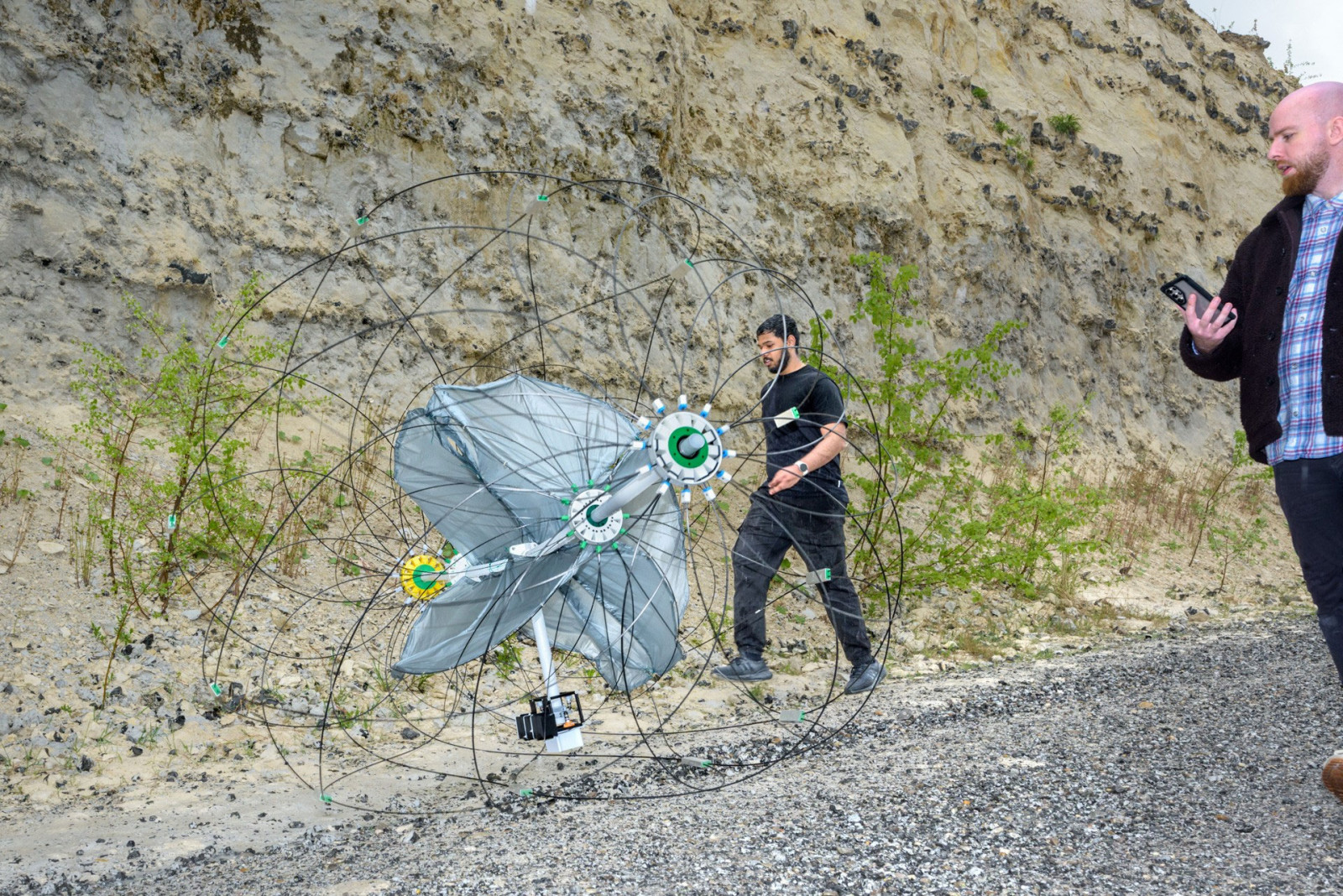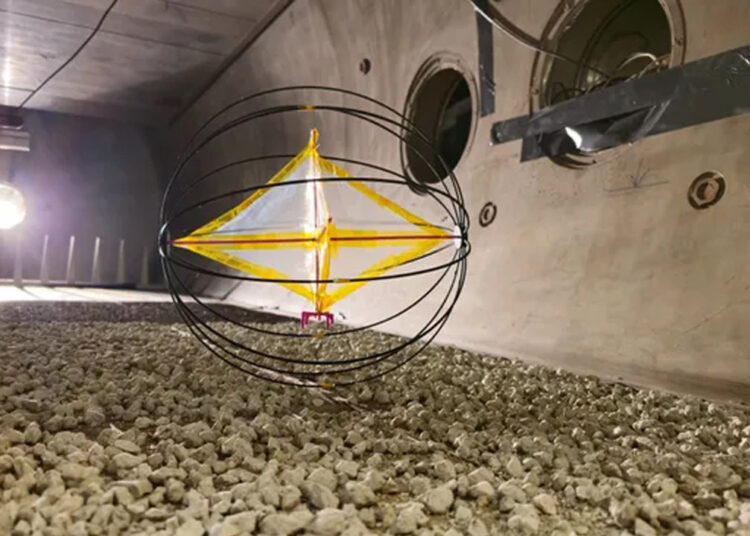The international youth research team has brought theory into practice by conducting practical tests on global exploration vehicles powered by wind energy. The “tumbleweed” concept, which is the focus of the design, aims to enable low-cost data collection over large areas of the Mars surface. The research team led by James Kingsnorth from Delft University of Technology shared promising results from wind tunnel and field tests with various prototypes.
The tests conducted both in the field and in the laboratory indicate the vehicle’s potential to gather environmental data while rolling along. In April, a semi-sized prototype tested in an abandoned quarry in the Netherlands demonstrated that it can move using wind even on rough terrain. Basic sensors on the prototype could collect environmental data.

Smaller models at the Planetary Environment Facility at Aarhus University in Denmark were brought to the wind tunnel in July. Prototypes built with a wire mesh structure 30–50 centimeters in diameter were tested under low-pressure conditions similar to the Martian atmosphere. Tests on sandy, gravel, flat, and rocky surfaces showed that wind gusts blowing at speeds of 9–10 meters per second could move these vehicles. Additionally, these vehicles could also navigate sloped terrains and climb slopes of about 11.5 degrees; this corresponds to approximately 30 degrees on Earth considering Mars’ low gravity.
Mário João Carvalho de Pinto Balsemão from the University of Lisbon, who contributed to wind conditions and real vehicle testing, emphasizes that the wind tunnel tests are designed cautiously. He notes that the results should be interpreted cautiously because the prototypes are not as lightweight as actual vehicles: “Real vehicles can start moving at lower wind speeds.” Past data related to Mars support this prediction. Findings from the InSight mission and the measurements of the Ingenuity helicopter indicate that wind speeds on the Mars surface often exceed 10 meters per second.
Simulations based on the developed models suggest that these vehicles could travel at an average speed of 0.36 kilometers per hour and cover about 400 kilometers within 100 Martian days. If favorable wind conditions continue, this distance could reach up to 2,800 kilometers; providing the opportunity to collect data from different regions simultaneously. When the missions are completed, the vehicles are expected to become passive, continuing to operate as fixed measurement stations, thus enabling a multi-stage data collection process.
The next step: for the advanced stages of the project, field tests are planned in the Atacama Desert of Chile in November. In the arid conditions similar to Mars, the accuracy of data collected while rolling with more advanced measurement devices will be assessed. Currently, the tumbleweed project is not officially adopted as an exploratory vehicle by a space agency; however, this low-cost, wide-area data collection approach has the potential to offer alternative solutions in Mars exploration.









